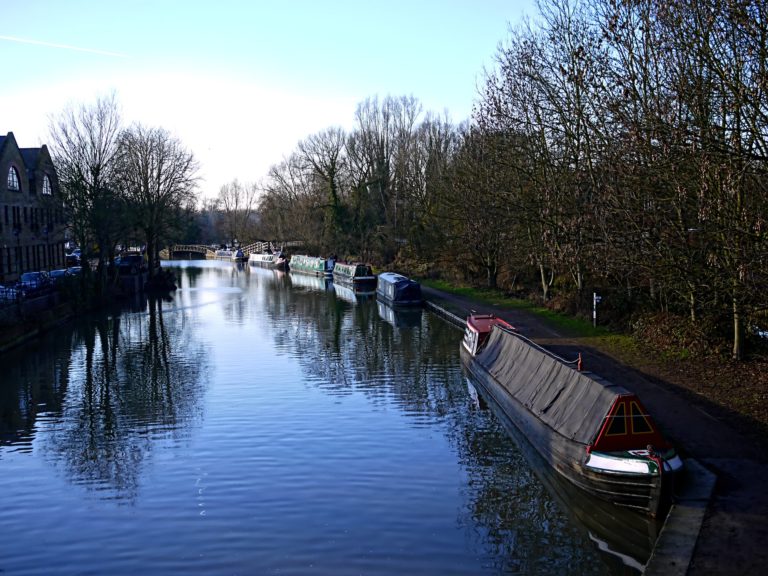Covid-19 and the leisure craft sector. Warpath on the towpath

Twelve weeks ago, as we settled into the first days of lockdown, I set off to cycle along the Grand Union Canal towpath, appropriately masked and gloved, for my HM Government-approved local daily exercise of 40 minutes. Strict rules were in place at that time for almost everyone in Britain. On arriving at the Cut, I found the towpath had been taped off by the Canal & River Trust. For the first time in 250 years, Britain’s canal network was closed.
Boat dwellers describes a widely divergent sub-culture ranging from city inhabitants/student accommodation providers to the ethnic group defined in UK census definition as ‘English Travellers’ (which also embraces fairground and circus travellers). To these people, the boat is their home where they live and raise their families. Their rights to be left in isolation had rightly been recognised. It’s hard to make social distance on a towpath which hardly ever achieves 2 metres in breadth.
I have always been aware of the air of mild hostility of canal dwellers towards weekend warriors, probably no different to any other area where visitors intrude on picturesque residential areas during high days and holidays. This sequence of events exacerbated it. Isolation meant stay at home, be it boat or house, and not travel between the two. Recreational boaters returning to their boats only served to expose boat dwellers to the viral spread and had this pointed out to them in no uncertain terms. Some marina residents had moved their boats out, mooring in isolated locations since being close to shop, church, public transport or pub was no longer an advantage. The Trust had complaints of walkers and cyclists using the boats as a handrail, ignoring the threat this posed to the inhabitants. The Trust also asked boats not to move. The two-week limitation on towpath mooring was waived for the period of lockdown. Nobody wanted to be called out for emergency repairs to a lock gate.
While we entitled this ‘Warpath on the towpath’, the wider divergence took place in the yacht marinas. In most marinas, there is a small number of unofficial liveaboards, where the owners remain on site for the entire year. Marina managers often turn a Nelsonian eye on them as they provide a valuable neighbourhood watch, without having to register with their local authorities as providing a place of residence. Hot on the heels of the lockdown announcement came a moratorium on evictions. The marina gates were locked and bolted, but the unofficial residents were allowed to remain. Recreational boaters were deprived of access to their boats, whilst the unofficial residents remained, and all paying the same fees.
At the same time, as spring approached, dry stacked boats or boats on cradles on the hard would normally have been craned into the water. This was not possible, so they remain in winter storage. Marina managers want boats in the water during the fine weather months, and dry storage or cradling is charged at a higher rate come the spring. Some managers waived the increase. Cradles usually only occupy space which is used for car parking in summer, but as no-one was able to drive and park, it wasn’t an issue. Others were less compromising and once the spring season arrived, owners fees increased. More backlash from owners. Where moving from a swing mooring to a marina for winter months is a condition of cover, owners who cannot return to their (cheaper) summer moorings are turning to their insurers for recompense.
As easing begins, owners are returning to their boats, but still unable to stay overnight. One can sympathise with the boater who leaves his boat at nightfall, drives home (using filling stations, service stations, public conveniences maybe popping past Barnard Castle for an eyesight check) then has to return the next morning to find the unofficial marina resident has had peaceful night on board.
When the keen boater is reunited with his boat, it would be natural for them to get under way and blow the cobwebs off. In many cases, owners will forego the extensive springtime maintenance tasks, deferring it until later in the season. It will be interesting to see how much of a spike this causes in claims.
I had extensive help from a friend, Jeremy Entwistle at GJW, in producing this week’s offering. Jez is passionate about sail training for youngsters and points out the frustration faced by the closure of sailing clubs for scouts, cubs, schools and care facilities. These are tomorrow’s boaters and losing their access to the water is a potential loss to the leisure craft industry of tomorrow’s sailors, when indeed it returns.
Finally, at the upper end of the market, a high net worth individual has been messaging everyone he can find an address for. ‘What is the largest boat I can drive myself?’ This gentleman took delivery of a 99m yacht with a crew of 40, just three years ago. ‘I’ll keep the yacht, but I’m not going anywhere near it this summer. I don’t want to expose my family to a crew. We’ll just cruise alone’. And one assumes, drive home every night. Tough for some.